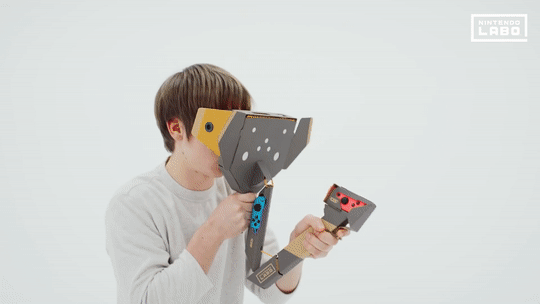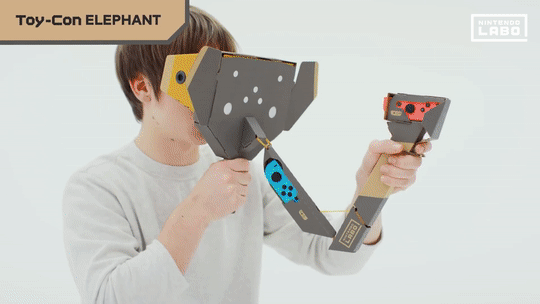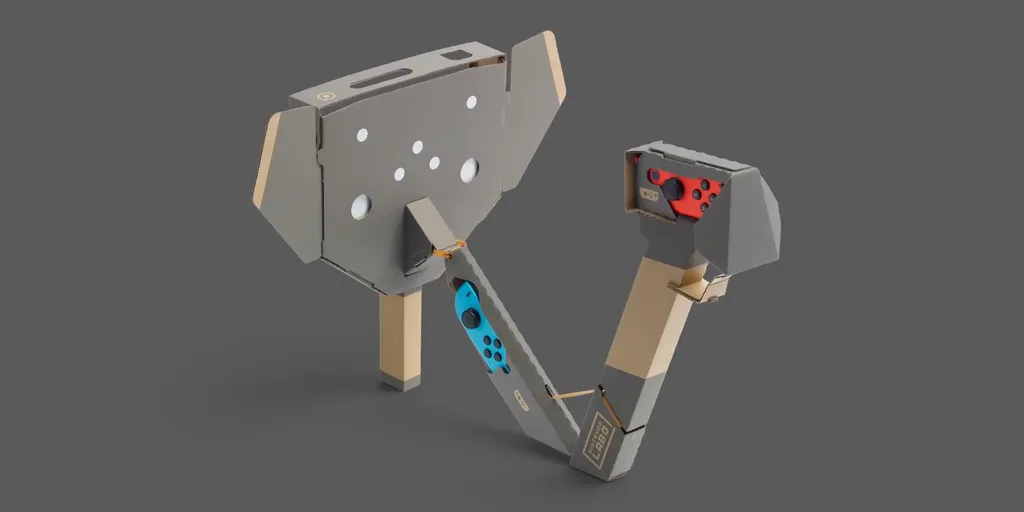Thought Nintendo’s Labo VR for Switch was just 3DoF? You’d be wrong. Nintendo actually uses a clever design to add positional controller tracking.
The Nintendo Switch right Joy-Con has a little known feature- an IR camera on the end. The VR Elephant Toy-Con has a slot for the right Joy-Con to be positioned in. It also has luminant paint dots on its front.
That IR camera only has a resolution of 340×220, but that’s enough to see those dots, and from that it knows its position. It’s similar to how tracking worked on the Oculus Rift, but having the camera move instead of the object with dots on it.

While the headset itself will still be 3DoF, the player can move the controller in and out and to the sides. The “trunk” is designed so that the dots will stay within the field of view of the tracking.
Nintendo uses this for two games so far. The first is a sculping game that seems similar to Oculus Medium. For this kind of sculpting controller positional tracking is vital, which is likely why Nintendo engineered this system.

The second is a puzzle game that almost reminds us of Gravity Lab. Here the higher degrees of freedom are needed to properly position the objects.
This is a smart use of existing low cost components to deliver a better VR experience than you’d have thought was possible on Switch. In fact, this kind of interactivity isn’t even available on Oculus Go or Samsung Gear VR. Nintendo have truly impressed us with this clever innovation.


























